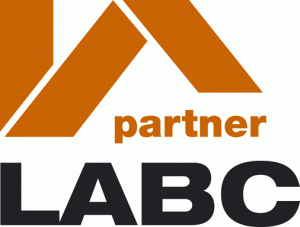| the Christopher Huntpractice architectural and building design for residential development |
|
Site
Menu
 |
|
|
Home Building Tips
TIP 1. Approach the Council first (sometimes): Depending on the size of the home building scheme scheme it can be helpful to ask for pre-planning application advice from your council. There may be a charge for this service, but it can reduce costly delays later on. Planners can suggest any necessary changes before making a formal planning application. After this it becomes progressively more difficult to make changes. TIP 2. Let immediate neighbours of the site know you are about to make a planning application: Neighbours often like to know what is going on and to fully understand the implications of a potential development on their doorstep - wouldn’t you like to know the same? You can explain the home building scheme to them and hopefully allay any potential fears. TIP 3. Follow the Council’s individual planning application validation requirements: Each Council has their own list of requirements for planning applications on home building and it is a simple checklist of information they need and providing this can reduce the chances of delay. Building your case – written statementTIP 4. Provide enough evidence to support your home building scheme: Anticipate any potential concerns from the beginning and provide evidence of how the scheme responds to, for example, highway safety issues or visual amenity issues etc. TIP 5. Keep information to the minimum possible: No-one wants to read lots of standard information that could apply anywhere. There is too much of that already. Pick out detail that is most pertinent to your scheme. Make it relevant, focussed and brief and this will help promote your case. TIP 6. Relate your scheme to local and national planning policies and guidance, where appropriate: Not necessary in absolute detail for smaller cases, but helpful to your case in indicating where it may be making a contribution towards implementing these objectives. Building your case – visual assessmentTIP 7. Show the immediate surroundings beyond the boundaries of your home building site: Very often it is the impact on its surroundings that is the issue, so show this on your proposals rather than let someone else have to make a ‘guess’ on the impact. TIP 8. Relate your home building development to other similar development in the area to help support your case. TIP 9. The opposite side of the coin however is to take care not to make tenuous connections with other developments that are either too old – relating to superseded local planning policy, or are not directly comparable Development principles. TIP 10. Look after valued features, such as an existing use valued by others, a locally important building, hedges and topography in your proposal: Make a proper assessment of the site and surroundings to ensure any positive features are retained wherever possible and where this cannot be achieved to consider a suitable replacement elsewhere. Bearing in mind that items such as historic fabric and ancient hedgerows cannot be replaced and removal will rarely be allowed by the local planning authority. Often thoughtful design and layout can ensure protection of these assets for future generations whilst adding more value to your home building development. NOTE - These are general discussion articles only.
|
Christopher Hunt MCIAT is not an Architect or a member of the RIBA but a Chartered Architectural Technologist - a professional building designer specialising in residential development from home extensions to new builds including conversions and refurbishments. He is a full member of CIAT which is a different and alternative qualifying body for professionals dealing with building design. If you specifically want an Architect click this link Home page About us Previous schemes gallery Client guides Client options after approval Construction News CIAT News Resources Home Building Contact Us Site Map |
|
|
|
|
Client Area:- Visit our Social Network Pages |
|
|
Work Areas
Residential development for household extensions, conversions and new dwellings. Measured surveys and roof inspection reports. Drawing plans on cad and specifications for planning permission, planning consent, planning approval, local authority approvals, building surveys and party wall act. Chartered Architectural Technologists belong to CIAT (the Chartered institute of Architectural Technologists). Key search phrases include - building designers, extend your home, extension guide, permitted development, planning advice, planning guide, planning gain. |
|
|
Article of the month:- Home building design ideas....
|
This page last updated:
© Copyright Christopher Hunt 2014. All Rights
Reserved.
|







